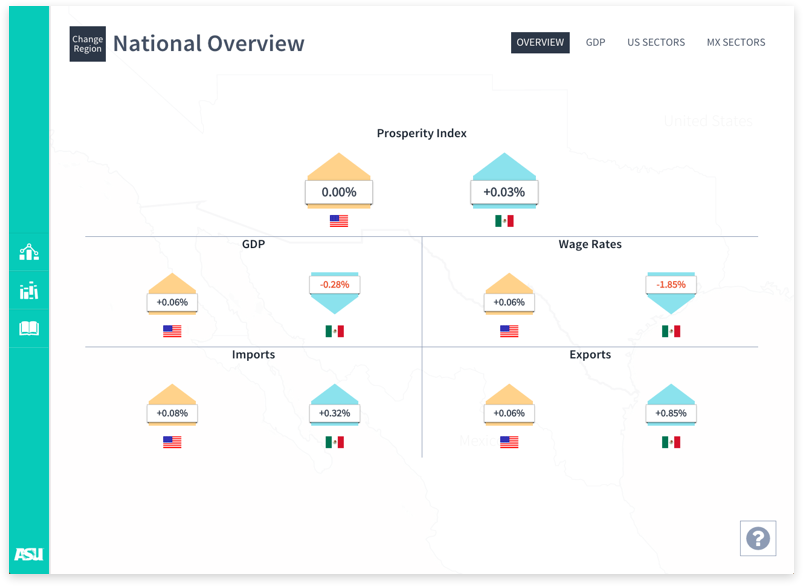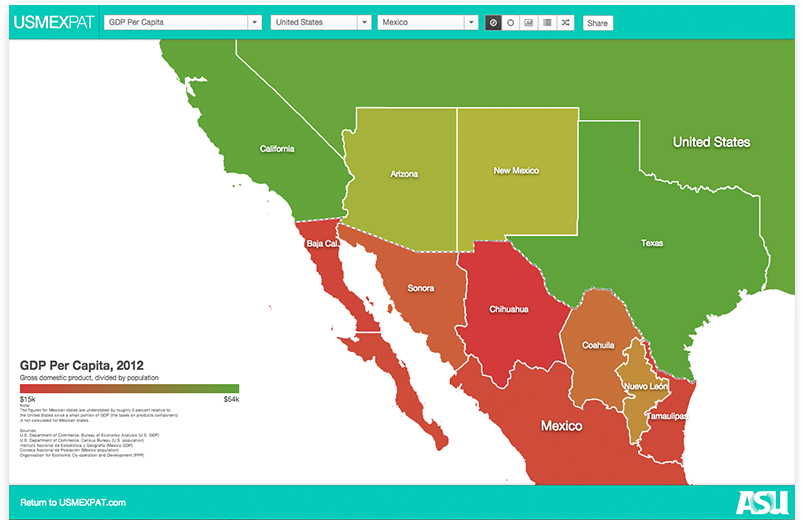A five volume series of reports plus a summary report provide background information on the demography and economy of the United States and Mexico, with a particular focus on the border area. Click on a title link to download a report.
- Volume 1: The Geography and History of the United States and Mexico, with a Focus on the Border Area
- Volume II: Demographic and Socioeconomic Profile of the United States and Mexico, with a Focus on the Border Area
- Volume III: Economic Profile of the United States and Mexico, including an Economic Base Study of the Border Area
- Volume IV: Trade between the United States and Mexico, with a Focus on the Border Area
- Volume V: A Description of Each State, County, and Municipio in the United States-Mexico Border Area

